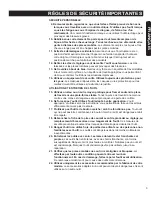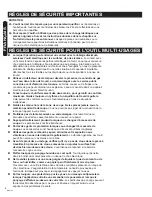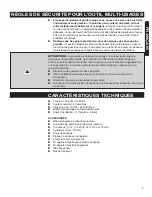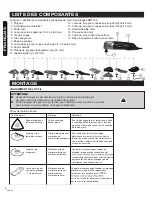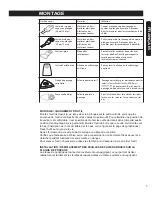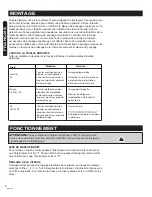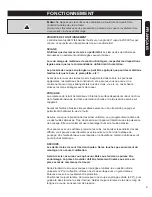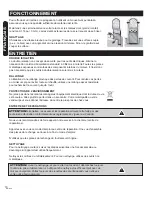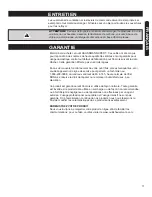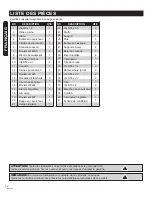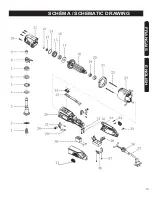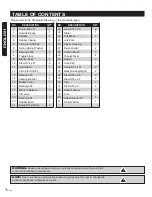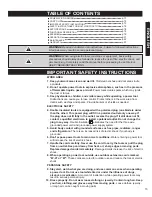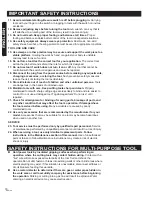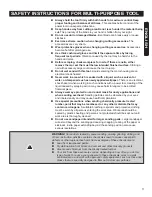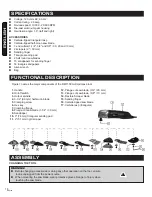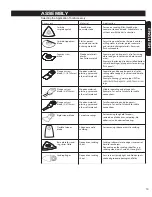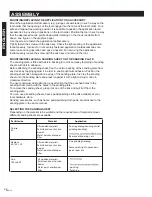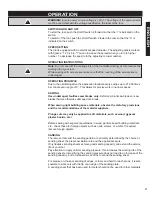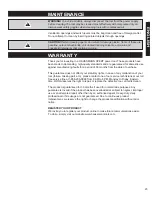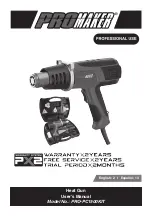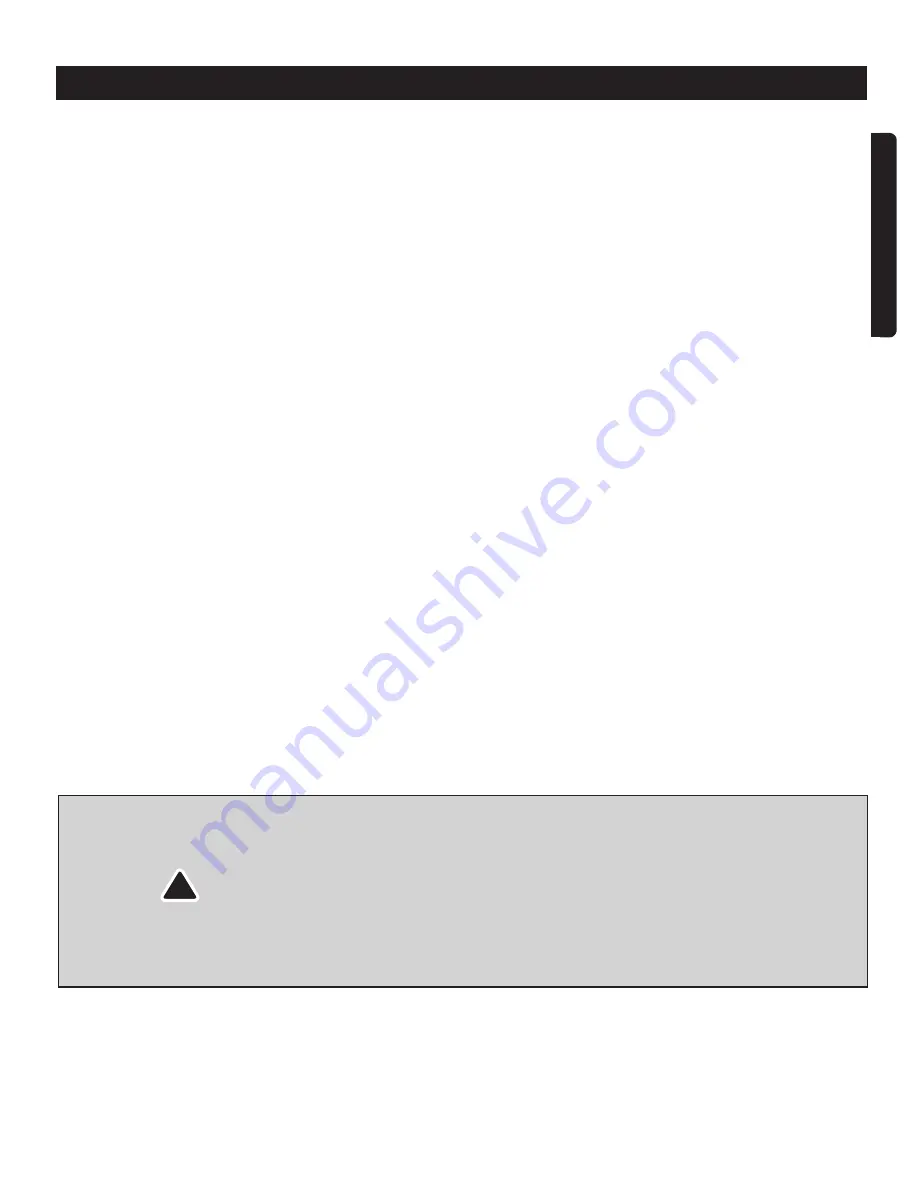
ENGLISH
17
!
SAFETY INSTRUCTIONS FOR MULTI-PURPOSE TOOL
Always hold the tool firmly with both hands for maximum control.Keep
proper footing and balance at all times.
This enables better control of the
power tool in unexpected situations.
Keep hands away from cutting area.Do not reach under the material being
cut.
The proximity of the blade to your hand is hidden from your sight.
Do not use dull or damaged blades.
Bent blade can break easily or cause
kickback.
Exercise extreme caution when changing cutting accessories.
The
accessories are very sharp.
Wear protective gloves when changing cutting accessories.
Accessories
become hot after prolonged use.
Use thick cushioned gloves and limit the exposure time by taking
frequent rest periods.
Vibration caused by the tool may be harmful to the
hands and arms.
Before scraping, check workpiece for nails. If there are nails, either
remove them or set them well below intended finished surface.
Striking a
nail with accessory edge could cause the tool to jump.
Do not wet sand with this tool.
Liquids entering the motor housing are an
electrical shock hazard.
Never work in area which is soaked with a liquid, such as solvent or
water, or dampened such as newly applied wallpaper.
There is an electrical
shock hazard when working in such conditions with a power tool. Heating of the
liquid caused by scraping action may cause harmful vapors to be emitted
fromworkpiece.
Always wear eye protection and a dust mask for dusty applications and
when sanding overhead.
Sanding particles can be absorbed by your eyes
and inhaled easily and may cause health complications.
Use special precautions when sanding chemically pressure treated
lumber, paint that may be lead-based, or any other materials that may
contain carcinogens.
A suitable breathing respirator and protective clothing
must be worn by all persons entering the work area. Work area should be
sealed by plastic sheeting and persons not protected should be kept out until
work area is thoroughly cleaned.
Do not use sandpaper intended for larger sanding pads.
Larger sandpaper
will extend beyond the sanding pad causing snagging, tearing of the paper or
kick-back. Extra paper extending beyond the sanding pad can also cause
serious lacerations.
WARNING! Some dust created by power sanding, sawing,grinding, drilling, and
other construction activities contains chemicals known to cause cancer,birth
defects or other reproductive harm.Some examples of these chemicals are:
Lead from lead-based paints.
Crystalline silica from bricks and cement and other masonry products.
Arsenic and chromium from chemically treated lumber.
Your risk from these exposures varies, depending on how often you do this
type of work.To reduce your exposure to these chemicals: work in a well
ventilated area, and work with approved safety equipment, such as those dust
masks that are specially designed to filter out microscopic particles.

